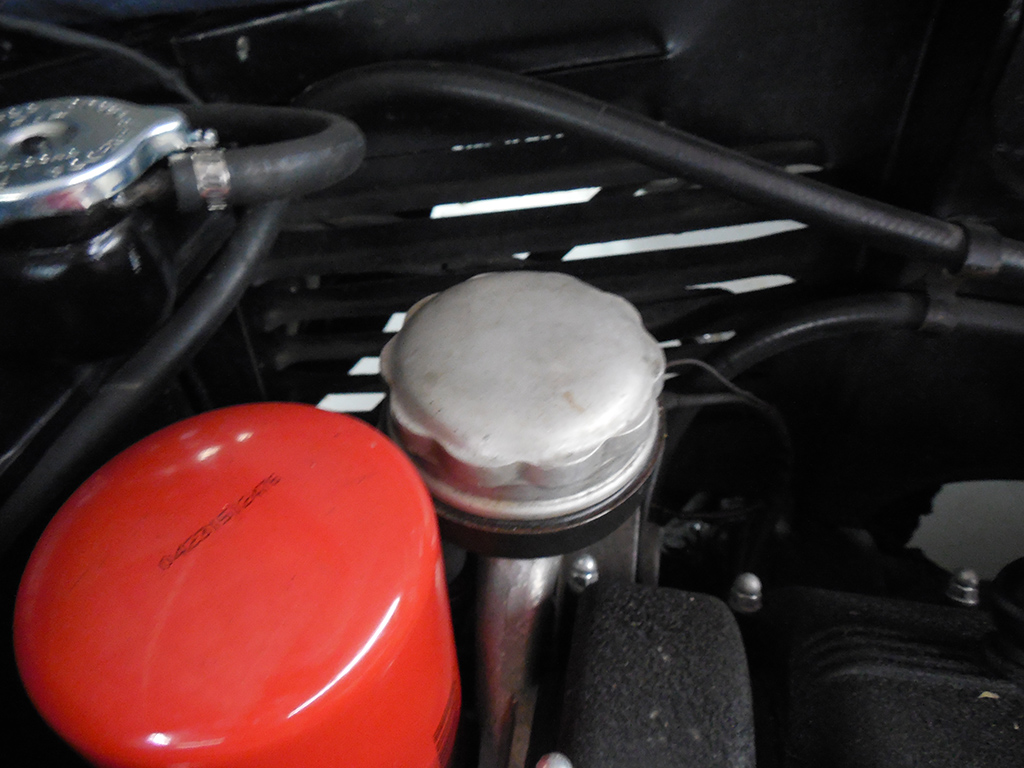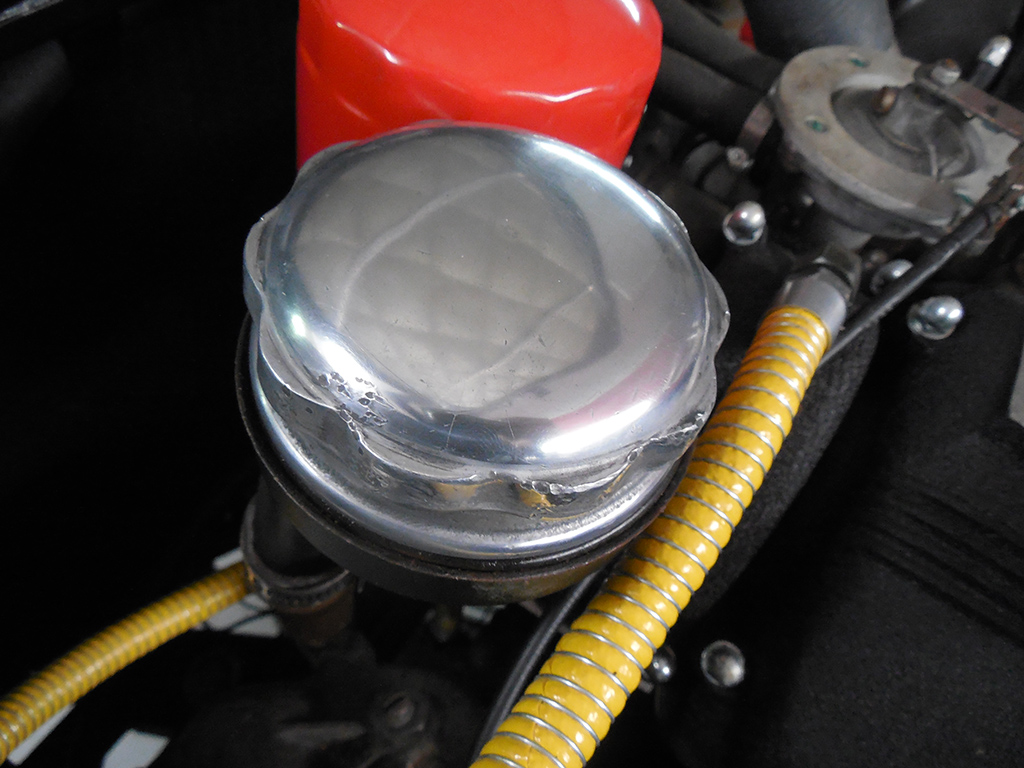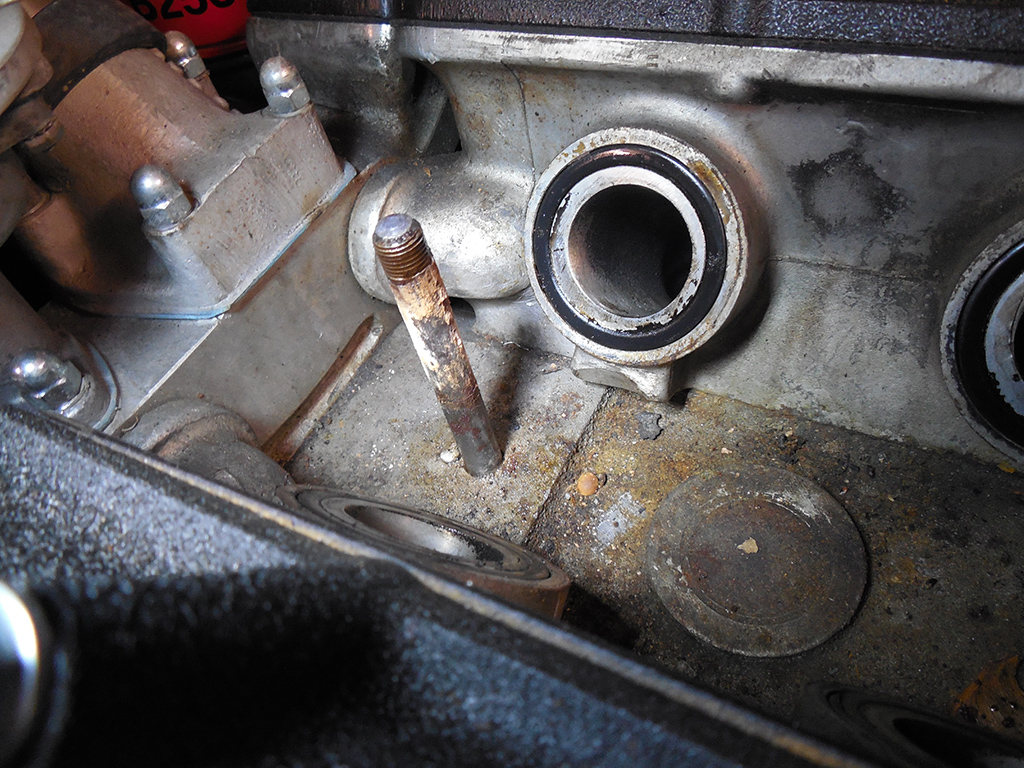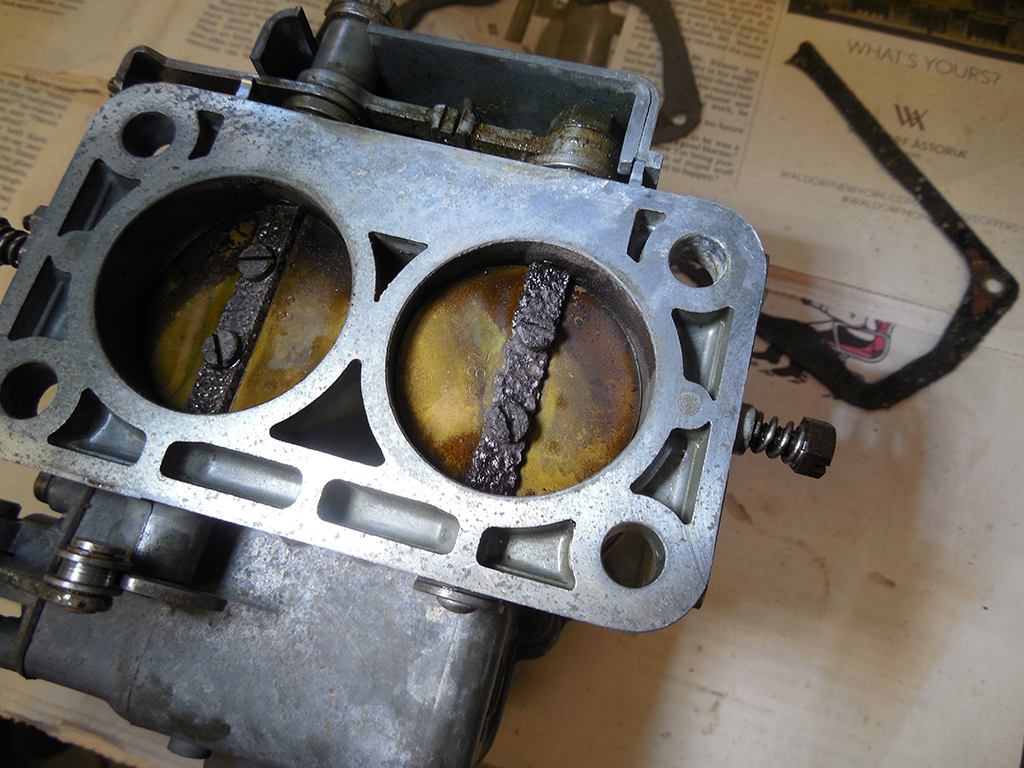330 Detailing
Work continued cleaning up the engine compartment of the SII 330 I have at Francois’ shop. The oil filler caps were a little dull and could use a little brightening
A little work with some fine sand paper and a buffing wheel had the shine back.
The intakes on this car was showing some fuel staining, and there was a lot of debris down inside the V of the engine, but getting the intakes on this car was a little more difficult than usual. A couple of the intakes were pretty stuck, so I made a jig with some scrap steel laying around the shop to pull the intakes off. Care has to be taken when putting pressure on these intake studs, as there isn’t a lot of material in the block behind these studs.
After applying heat and gradual pressure, the intake manifolds came out. You can see the corrosion that locked the aluminum intake to the steel stud.
With the carbs off, I wanted to clean the bodies a little bit of the accumulated dirt, oil, and fuel stains, but found something a little odd.
One of the carbs showed a lot of corrosion at the throttle shaft. It was so bad that I was concerned a throttle plate screw was going to fall because there was no more material holding it in! The strange thing was the adjacent throttle plate showed a little corrosion, but all the other carburetors were fine? I’ve been trying to come up with a reason for this, but no matter how I let my imagination run wild, I can’t seem to come up with a plausible answer. There was definitely some kind of moisture that caused the intakes to corrode and seize them to the steel studs, but what would cause one throttle plate to rust more than the others? I usually don’t see this kind of corrosion unless a car that has been sitting in damp conditions for many years, but this car is a running and driving car that runs and drives fine.
I called Mike at Pierce Manifold to get a replacement shaft for this Weber 40 DFI2 Carburetor, but he only had oversized shafts for sale. This would make sense as most carburetors needing throttle shaft replacements are because the throttle shafts are worn and an oversized shaft is the common solution. Repairing this issue on this customer’s carburetor with an oversized shaft creates more work because fitting the carburetor with a larger shaft will require some machining that’s a little involved. Mike is going to look in his box of spare parts and see if he can find a good standard sized shaft for me to use, so I’ve got my fingers crossed!










